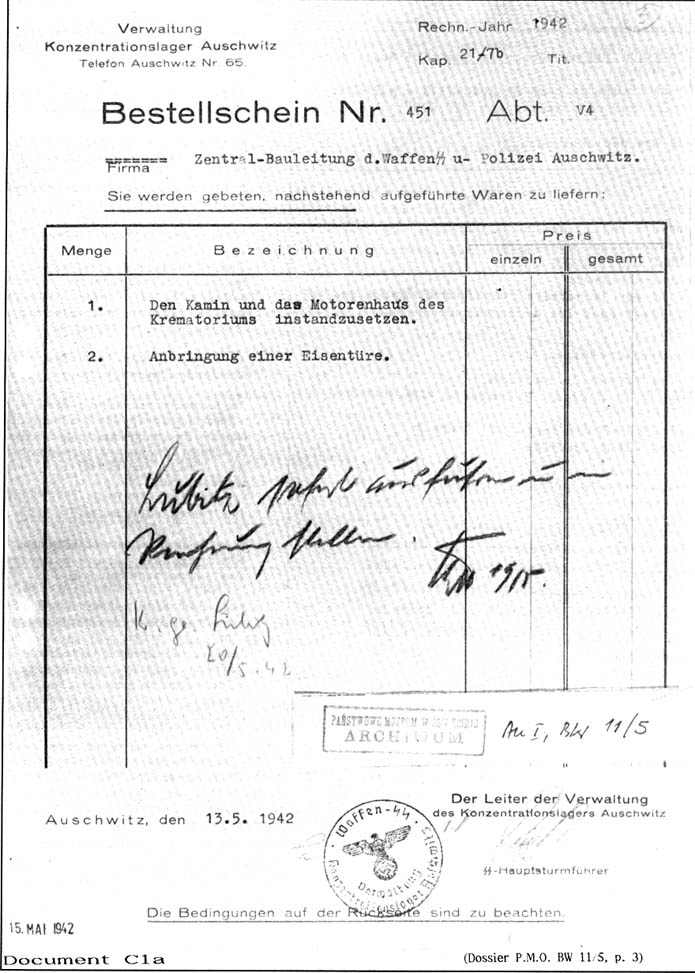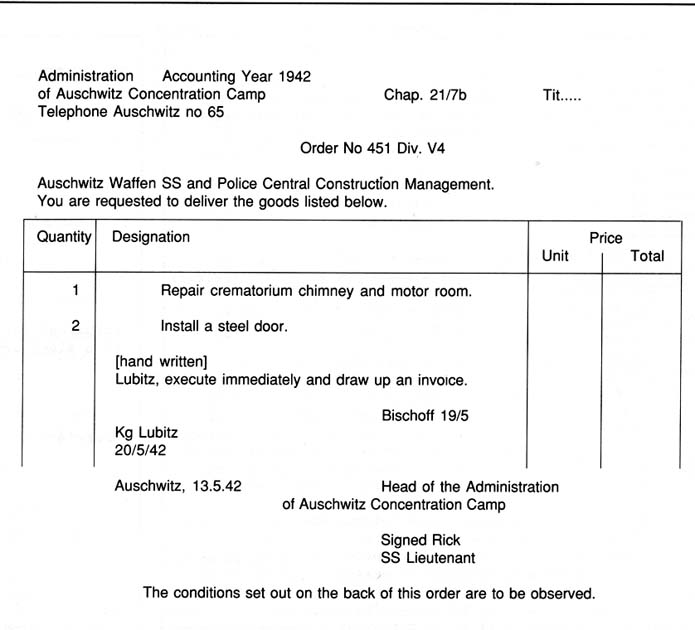| Document C1a |
 |
Document C1b
[PMO File BW 11/5 page 3] |
 |
| Like all human testimony, these accounts frequently contain unlikely affirmations, and a critical comparison, for example on the equipment of the gas chamber, gives contradictory results. |
| 1. |
ALTER FAJNZYLBERG affirms that an incineration muffle in one of the three furnaces (the mouth opening was 0.60 × 0.60m, and the internal dimensions 0.70 × 0.70 × 2.10m, or 1.029m³ according to Topf drawing D57253) could “swallow” TWELVE bodies at a time (which is mathematically possible, but not practically), but that normally five were “fitted in”. The latter figure is closer to reality which was on average three (normal adult) bodies at a time. The witness clearly gave way here to the general tendency to exaggerate at that time (in the years 1945-50). His description of the equipment of Krematorium I is valid (though the building had been converted into an air raid shelter and the furnaces had been removed), except for its length (50m) and the dimensions given to its gas chamber: 30 × 5m (150m²) instead of 17 × 46m (78.2m²). This error in estimation is more than excusable, in particular as the PMO, in a note to his figures [30 × 5m], indicates the following dimensions: 17.00 × 4.50m giving a floor area of 65m² [!], an area regularly reproduced in the early histories of the camp, but not corresponding to the facts. What is remarkable in his new declaration in September 1980 is that the witness repeats exactly the same dimensions as he did in April 1945, a proof of the sincerity and authenticity of his statements. |
| 2. |
FILIP MÜLLER wrote that in May 1942 (the date of his arrival at the camp, page 23), the chimney of Krematorium I was of circular section (p. 37) [an initial state confirmed verbally to the author in 1981 by a former prisoner. Mrs. Hertig, No. 68919, who lived in the town of Auschwitz before being interned in the camp]. The Topf |
|

